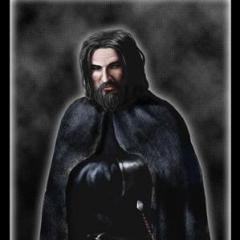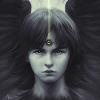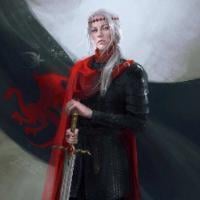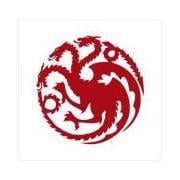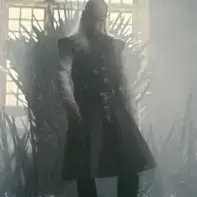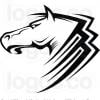-
Posts
12,801 -
Joined
-
Last visited
Recent Profile Visitors
20,394 profile views
Rhaenys_Targaryen's Achievements

Council Member (8/8)
-
 Xander Baratheon reacted to a post in a topic:
[TWOW Spoilers] Miscon reading : two Winds of Winter chapters
Xander Baratheon reacted to a post in a topic:
[TWOW Spoilers] Miscon reading : two Winds of Winter chapters
-
Jon Connington states it has been 17 years since the battle (ADWD chapter 24) somewhere mid-300 AC. This would place the battle in 283. Had the battle taken place in 282 AC, the man would have stated it had occurred 18 years before. Compare it to the statements of Elia Martell's death. Just before Joffrey's wedding, in 299 AC, it is still considered 16 years ago, and just after Joff's wedding, it is considered 17 years ago. Elia died in the lattwr half of 283 AC. The Battle of the Bells would have taken place at the start of the year though, since Robb Stark was conceived after the battle and was still born in 283.
-
Just like events 'a decade ago' are not always exactly ten years, and 'a thousand years' does not always mean exactly a thousand years, 'a century' does not necessarily have to mean 'exactly a hundred years before'. And since the phrasing in TWOIAF resulted in discussion on the correct interpretation, it is nice to have now this confirmation
-
While I don't check the forum daily anymore, I do still check in with some frequency The situation you describe would be an exception to the guideline. If the source says Aegon was born in 27 BC and that Visenya was two years older, we should indeed place het birth in 29 BC, until a future source specifies the placements of the births in the respective years.
-
Rhaenys_Targaryen started following The Wiki-Timeline Project v2 and The ASOIAF wiki thread
-
Regarding timelines, on the official George RR Martin Facebook there was a post today on Aenar the Exile. The post was accompanied bt the text: Kicking off #TargaryenThursdays with Aenar Targaryen, The Lord who Left or Aenar the Exile. In 114 BC, 12 years before the fall and after a prophetic dream from his Daughter, he fled Valyria and moved the Targaryen name to a new land and establishing Dragonstone. As I remember that the way it was phrased in TWOIAF it was still unclear if 114 BC was the year of the Doom, or whether 114 BC was the 12th year before the Doom, the above post seems to make it clear that 114 BC was the 12th year before the Doom, making 102 BC the year of the Doom. My question, @Ran, how (semi)-canon can we consider this post to be? It is (most likely, but not certainly) not written by GRRM himself, but it is posted via his account. As this would settle quite a long timeline argument, I am curious about your response
-
Sorry, I think that was my mistake. I had started writing this morning on a correction for the page and pressed save much later today, so some newer edits might have gotten lost in the mix there. I will double check, but I have at least corrected the Maladon Moore issue already.
-
 The Wondering Wolf reacted to a post in a topic:
The ASOIAF wiki thread
The Wondering Wolf reacted to a post in a topic:
The ASOIAF wiki thread
-
 Ran reacted to a post in a topic:
The ASOIAF wiki thread
Ran reacted to a post in a topic:
The ASOIAF wiki thread
-
It is good to have this information! Thank you! I have updated Catelyn's wiki page to reflect this.
-
 Rhaenys_Targaryen reacted to a post in a topic:
The ASOIAF wiki thread
Rhaenys_Targaryen reacted to a post in a topic:
The ASOIAF wiki thread
-
I agree with this conclusion, and have removed the note from the page. It is clearly stated that the information comes from a semi-canon source, and until there is something canon published that contradicts this semi-canon information, it should be fine to have it written like this without a note speculating why it might not have been included in the published materials.
-
 Lost Melnibonean reacted to a post in a topic:
Small Questions v. 10106
Lost Melnibonean reacted to a post in a topic:
Small Questions v. 10106
-
Good catch!
-
Paper currency has thus far not been described. We have seen examples of people signing contracts promising money to be paid at a later point in time (eg Tyrion for the Second Sons). The method the Brotherhood without Banners uses, shows that the smallfolk have no use for such promises on paper, though. Assuming the smallfolk of Essos feel the same way, if the Iron Bank does not pay out in actual coins, the client will still not be able to use it. Perhaps, where the loan concerns a really large amount, the Iron Bank does not pay everything out at once. Possibly, we'll learn more about it in Winds
-
I don't see any potential issue depicted for Brandon. For Jonnel Stark, the texts accurately depicts the order of his marriage: Lord Jonnel Stark, known as One-Eye, married first to his half-niece Lady Sansa Stark and second to Lady Robyn Ryswell. If this is not the text you see, try clearing your cache. Arrana and Aregelle are depicted correctly. Arrana was the elder of the two. Sansa and Serena are also depicted correctly, as it has been confirmed that the order as presented in the book is incorrect compared to Martin's notes for the tree. Sansa was the elder of the two. Can you let me know if clearing your cache worked?
-
I'm not sure that we can take the absence of Vaegon being mentioned or considered as a confirmation that he had died previously. He had been ruled out on account of his vows during the Great Council, and that fact had not changed.
-
 Lord Corlys Velaryon reacted to a post in a topic:
The ASOIAF wiki thread
Lord Corlys Velaryon reacted to a post in a topic:
The ASOIAF wiki thread
-
@Lord Corlys Velaryon, @The Wondering Wolf and @Thomaerys Velaryon, thank you for the suggestions! I used the maximum age of a woman's fertile stage to somewhat decrease the possible years of birth for Lyarra. Luckily most are not that broad by far hahaha :p
-
I agree.
-
 The Bard of Banefort reacted to a post in a topic:
Small Questions v. 10106
The Bard of Banefort reacted to a post in a topic:
Small Questions v. 10106
-
It was never confirmed who it was, no (except that it was not Criston Cole or Alicent Hightower).
-
For Saera, I interpret the text as possibly including her (but I'm not a native speaker, so perhaps I am wrong). For Daemon, not so much. TWOIAF states only that there were 9 lesser claiments, and 2 finalists: At this council, nine lesser claimants were heard and dismissed, leaving only two primary claimants to the throne: Laenor Velaryon, son of Princess Rhaenys—who was the eldest daughter of Jaehaerys's eldest son, Aemon—and Prince Viserys, eldest son of Baelon the Brave and Princess Alyssa. Fire and Blood provides more info, and states as follows: No fewer than fourteen claims were duly examined and considered by the lords assembled. From Essos came three rival competitors, grandsons of King Jaehaerys through his daughter Saera, each sired by a different father. One was said to be the very image of his grandsire in his youth. Another, a bastard born to a triarch of old Volantis, arrived with bags of gold and a dwarf elephant. The lavish gifts he distributed amongst the poorer lords undoubtedly helped his claim. The elephant proved less useful. (Princess Saera herself was still alive and well in Volantis, and only thirty-four years of age; her own claim was clearly superior to those of any of her bastard sons, but she did not choose to press it. "I have my own kingdom here," she said, when asked if she meant to return to Westeros.) Another contestant produced sheafs of parchment that demonstrated his descent from Gaemon the Glorious, the greatest of the Targaryen Lords of Dragonstone before the Conquest, by way of a younger daughter and the lord she had married, and on for seven further generations. There was as well a strapping red-haired man-at-arms who claimed to be a bastard son of Maegor the Cruel. By way of proof he brought his mother, an aged innkeep’s daughter who said that she had once been raped by Maegor. (The lords were prepared to believe the fact of rape, but not that the act had gotten her with child.) The lords "examined and considered" fourteen claims. That does not necessarily mean that fourteen claims were presented. They were discusses. The paragraph identified Saera's three bastard sons, a descendant of Gaemon the Glorious, and a "bastard of Maegor". That's five. The Great Council deliberated for thirteen days. The tenuous claims of nine lesser competitors were considered and discarded (one such, a hedge knight who put himself forward as a natural son of King Jaehaerys himself, was seized and imprisoned when the king exposed him as a liar). Archmaester Vaegon was ruled out on account of his vows and Princess Rhaenys and her daughter on account of their sex, leaving the two claimants with the most support: Viserys Targaryen, eldest son of Prince Baelon and Princess Alyssa, and Laenor Velaryon, the son of Princess Rhaenys and grandson of Prince Aemon. Viserys was the Old King's grandson, Laenor his great-grandson. The principle of primogeniture favored Laenor, the principle of proximity Viserys. Viserys had also been the last Targaryen to ride Balerion ... though after the death of the Black Dread in 94 AC he never mounted another dragon, whereas the boy Laenor had yet to take his first flight upon his young dragon, a splendid grey-and-white beast he named Seasmoke. The following paragraph tells us that a hedge knight , Archmaester Vaegon, Rhaenys, Laena, Laenor, and Viserys were further discussed. That is the two "finalists" and four other, 'lesser' claims. Nine lesser claims in total, leaving four unaccounted for. However, the text does state that Saera's claim was 'clearly superior' to those of her three sons. The text states that she choose not to press her claim, but that does not mean her claim could not have been discussed, as the only parent of royal blood of three of the claimants. The text is vague, IMHO, about whether or not she was included in the count. At most, I think, we can include a sentence stating that it is unclear from Gyldan's account if Saera's own claim was discussed by the lords or not. But no part of the text suggests that Daemon's claim was ever considered, especially not since he was a younger brother, and according to the laws of inheritance, the elder brother is customarily the first to inherit.



